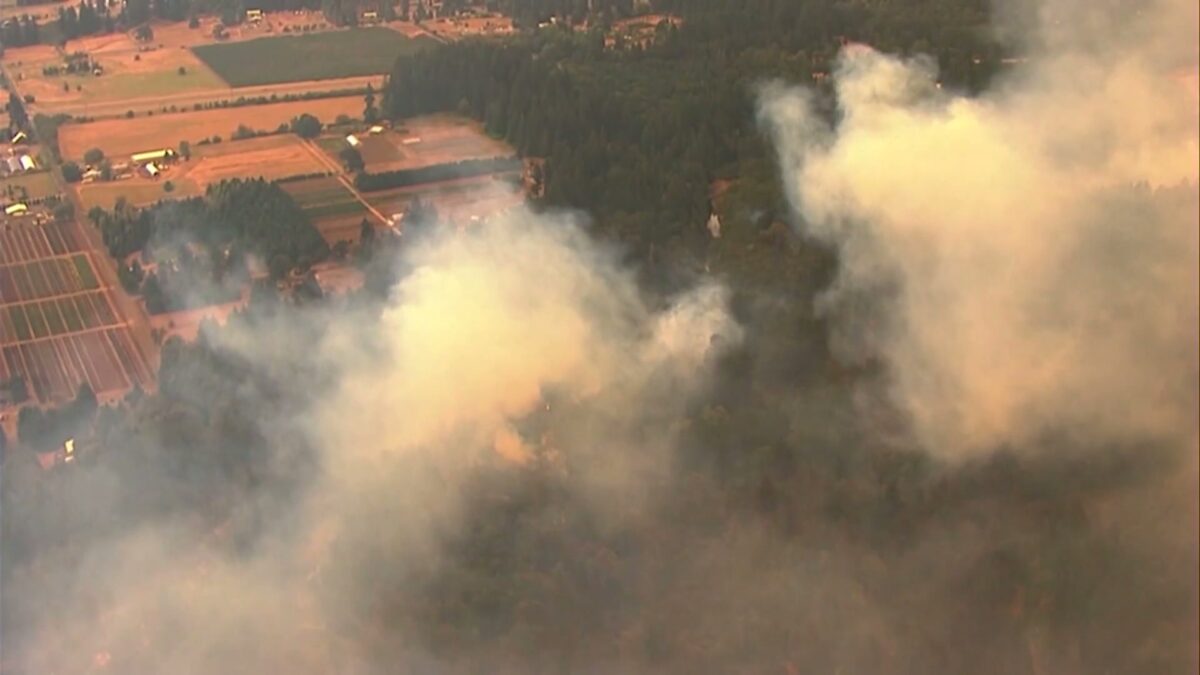Oregon DEQ issues report on 2024 smoke trends: Longer wildfire seasons mean more unhealthy air days in Bend, elsewhere

Jillian Fortner
(Update: comments from DEQ, Deschutes County Public Health, KTVZ chief meteorologist)
PORTLAND, Ore. (KTVZ) – The Oregon Department of Environmental Quality has released the 2025 Wildfire Smoke Trends Report, which gathers and examines data about how the 2024 wildfire season affected air quality across the state.
Oregon’s wildfire season has historically started in late July and continued into early September. In the last three years, fires have begun in mid-July and extended into early October. The 2024 wildfire season included numerous fires and complexes throughout the entire state. Smoke from wildfires in Washington also affected the air quality in Oregon.
Across the state, wildfire smoke has contributed to an increase in the number of days with Air Quality Index levels that are Unhealthy for Sensitive Groups or worse, with notable examples observed in Bend and Klamath Falls.
Between 2000 and 2012, Bend had six USG (Unhealthy for Sensitive Groups) days caused by wildfire smoke.
Between 2013 and 2024, Bend experienced 98 days at USG or worse, including 31 Unhealthy days, 10 Very Unhealthy days, and eight Hazardous days. Of those, 94 days ≥ USG occurred from 2017 to 2024.
“It’s a pretty dramatic change, and we see increases like that across the state,” said Chris Varley, DEQ’s air quality public affairs specialist.
“It is important to note that even Moderate AQI levels can adversely affect sensitive individuals. There is no completely ‘safe’ level of exposure to PM2.5. Additionally, wildfire smoke contains a complex mixture of hazardous elements, things like formaldehyde, benzene, and even some heavy metals, which are dangerous to breathe,” explained Ali Mirzakhalili, DEQ’s Air Quality Administrator. “Everyone should keep watch on local air quality and take steps to avoid or minimize exposure to smoke in order to protect themselves, their families, friends, and neighbors.”
The report features the recalibration of historical data for Oregon’s AQI levels back to the year 2000 in order to reclassify the data according to the Environmental Protection Agency’s more protective AQI standards introduced in May 2024.
Deschutes County Health Services Climate and Health Coordinator Sarah Worthington said, “That particulate matter is actually more hazardous than what we previously believed it to be. So even just a smaller amount is considered to have impacted the air quality.”
Despite last year’s costly wildfire season and the large number of acres burned, the DEQ report shows it wasn’t unusual, when it comes to poor air quality.
KTVZ Chief Meteorologist John Carroll says wind and fire location can matter more than the size of the fire.
“The year before that, we had a big fire in the Cascades with the winds coming from the west, bringing that smoke right here into Deschutes County,” Carrol saidl. “Although it was a smaller number of acreage that year, we had poorer air quality because of the position of the fire and the direction of the winds.”
The DEQ says this year has been milder so far, with fewer smoky days.
“The weather has been a little cooler, a little more wet,” Varley said.
Officials warn that severe wildfire seasons are still likely in the years ahead.
Worthington said, “We’re really in somewhat uncharted territory, in terms of having this new and unfortunately, often frequent hazard with our air quality,” Worthington said.
Check the air quality in your area here.